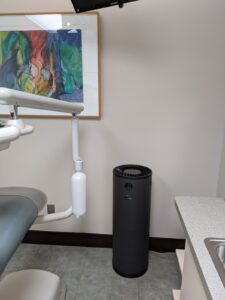 Sleep apnea can be difficult to diagnose since it occurs throughout your sleep cycle and many patients are unaware of their actions during. The symptoms that present with this sleep disorder can also point to other conditions such as fatigue or depression, leaving it often overlooked. There are many misunderstandings when it comes to sleep apnea – whether it be about diagnosing, treatments, or even just understanding the disorder in general. Often times, patients will think they’re “too young” or “too skinny” to be having these issues, but sleep apnea can be caused by a multitude of different things. So, let’s debunk those myths and give you the facts!
Sleep apnea can be difficult to diagnose since it occurs throughout your sleep cycle and many patients are unaware of their actions during. The symptoms that present with this sleep disorder can also point to other conditions such as fatigue or depression, leaving it often overlooked. There are many misunderstandings when it comes to sleep apnea – whether it be about diagnosing, treatments, or even just understanding the disorder in general. Often times, patients will think they’re “too young” or “too skinny” to be having these issues, but sleep apnea can be caused by a multitude of different things. So, let’s debunk those myths and give you the facts!
1.Everyone Who Snores Has Sleep Apnea
While snoring is a common sign of this sleep disorder, it does not determine whether or not you have it. On the other hand, you could be having the same issues in your sleep without snoring at all.
2.I’m Not Overweight, I Can’t Have A Sleep Disorder
While obesity and being overweight can certainly increase your risks for such a sleep disorder, you don’t have to be overweight to experience the lack of oxygen in your sleep cycle. There are two types of sleep apnea; obstructive and central. Central sleep apnea occurs when your brain is unable to send the proper signals to the rest of your body indicating that you need oxygen – completely separate from your weight. However, OSA occurs when the muscles at the back of your throat relax, obstructing your airway.
3.I Have To Sleep With A CPAP Machine To Treat My Sleep Apnea
This is one of the biggest myths of all! CPAP machines require a pretty drastic lifestyle change so they can seem intimidating. Rest assured, using a CPAP machine for the rest of your life is not required if you suffer from sleep apnea. In fact, oral appliance therapy can help just as well – opening your airway enough to encourage airflow throughout your sleep. If you’re experiencing any signs of sleep apnea, it’s recommended to visit your dentist sooner rather than later.






